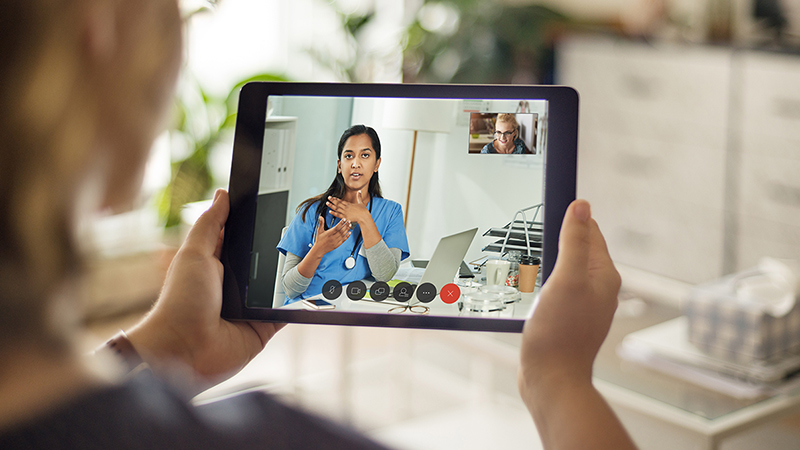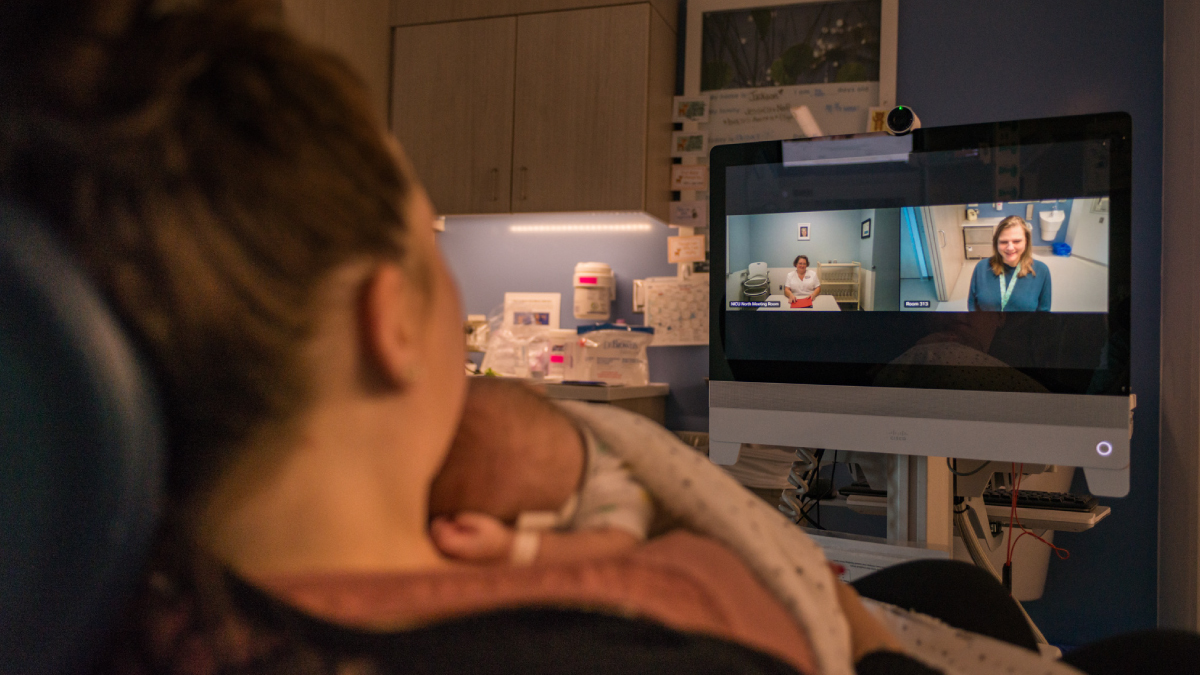CIOs and IT teams are among the critical front-line workers who have kept the world running through the COVID-19 pandemic. So at Cisco Live last week, the company was honored to highlight the efforts of top healthcare CIOs. All spoke of challenging times in the early days of the virus, but saw a positive future for healthcare.
“Healthcare is going to change forever,” Cisco CEO Chuck Robbins predicted at the virtual event, the company’s premier education and training event for IT professionals. And he was quick to share Cisco’s efforts to make those positive changes happen.
“It’s been a phenomenal show of support from all the communities of the world,” Robbins said of efforts to combat the pandemic. “Cisco now has contributed roughly $500 million dollars to this response. And as the world runs on our stuff … we are more committed than ever to getting through the current challenges.”
As part of that commitment, the company announced new capabilities for business resiliency. These include continued support for healthcare, such as infrastructure kits for emergency field hospitals.
Todd Nightingale, Cisco’s SVP and general manager for enterprise networking and cloud, stressed that such solutions will better support the kind of herculean efforts we have seen from healthcare and IT workers in recent months.
“There have been heroics across healthcare groups around the world,” he said. “One of the most remarkable was at the U.K. National Health Services where they popped up enormous field hospitals. One was a 4,000-bed field hospital that they deployed in nine days, and they built out the network in only seven days.”
All over the world, IT teams accomplished things that would have seemed impossible even weeks earlier.
“We changed everything in five days,” Peter Marks, vice president and CIO of WakeMed Health and Hospitals in North Carolina, said at a roundtable discussion. “We went from having no telemedicine appointments to having 2,500 in a week.”
Marks cited the organization’s partnerships as a key driver of that fast pivot.
“When COVID hit, we were really fortunate that we had already created these really strong relationships with our vendors, including Cisco,” he added. “And although it was pretty crazy, we were able to rapidly adjust. We were able to use Webex to not only treat patients but for every meeting that was previously face-to-face.”
That rapid shift to telemedicine could reveal a window into the very future of healthcare.
“Telemedicine is here to stay,” Suleima Salgado of the Georgia Department of Public Health said at another roundtable discussion. “If anything, it’s going to triple in expansion and growth, and it’s going to be a standard model of care moving forward now, post COVID.”
Part of the reason is that patients and healthcare professionals — many of whom may have resisted change pre-COVID — will now expect it. In many cases, telemedicine will prove safer, faster, and more efficient than face-to-face visits, which can involve long travel times, frustrating waits, and exposure to dangerous pathogens.
“The patients are really demanding it now, because they had a taste,” said Peter Marks, “and thank God they had a taste.”
Dr. Damian Jankowicz, CIO and chief privacy officer for Canada’s Center for Addiction and Mental Health, spoke of Webex’s ability to keep patients and healthcare specialists separate, while still maintaining a human connection. “Some clinicians came to me, and they called Webex virtual PPE, virtual protective equipment,” he said. “They say working through Webex makes me feel so safe.”
At Cisco Live, the company announced new capabilities that will make Webex even more intelligent, integrated, and secure, with greater capacity to support business resiliency for future crises.
Maintaining trust and privacy as cyberthreats rise
“We’ve said for years, privacy is a human right,” Robbins repeated in his keynote. And nowhere is that more obvious than in healthcare. Patients need to feel that their records, healthcare data, and shared feelings are protected by rock-solid security.
As many headlines trumpeted during the pandemic, hackers had a field day with unsecured platforms. Cisco solutions, however, have been a success story throughout the crisis.
“Privacy isn’t something that we can bolt on,” said Steve Martino, Cisco’s chief information security officer. “It’s not something we can think about after we enable some new capability; we really need to bake that in. And we need to hold our vendors and partners accountable for doing that early and making it a fundamental part of their solutions.“
Traci Tyndall CTO of WakeMed Health and Hospitals said that previously all electronic medical records had been secured on prem. But with the upsurge in remote collaboration, they needed to ensure that patient privacy was guaranteed in virtual meetings and team spaces.
“We went through all the checks and balances to make sure that Webex was secure,” Tyndall said. “It’s encrypted, it’s secure, and we were 100 percent confident.”
In challenging times, a better way forward
In supporting the courage and expertise of health professionals, secure, fast network technologies and collaboration tools played an essential role. They enabled deeper levels of collaboration and information sharing; connected more patients remotely than ever before; and freed up scarce talent for the most acute emergencies. And not least, they enabled both patients and workers to stay home, thereby lessening the spread of the virus.
Along the way, it revealed a window into the very future of healthcare.
“I’m excited about the new opportunities,” said Martino. “The new things that we can bring to our customers, to our employees, the new kinds of experiences that maybe we were thinking about but were hesitant to do. But today we’re really doing them.”
Cisco’s purpose is to power an inclusive future for all, and moving forward that will include efforts to make healthcare more equitable and accessible to the most underprivileged members of society.
Liz Centoni, Cisco’s SVP for emerging technologies and incubation, spoke of the promise of AI and machine learning in healthcare — but only if we use them ethically, and program them without unconscious bias.
“We want to solve an inclusive future for everybody,” she said, “not just those who can afford access to healthcare and education.
Increasingly, she added, that will demand a more conscious, inclusive approach to technology.
“The ethical way to create AI and machine learning is to have the purpose of creating that capability for everyone,” Centoni said. “You need to build the models with that intent. [Otherwise] access to healthcare could be based on your socioeconomic status or the color of your skin.”
Jankowicz, of Canada’s Center for Addiction and Mental Health, concluded his discussion by emphasizing the great opportunities that are emerging from these challenging times.
“Even in crisis, there is an opportunity,” he said, “and whether that comes to what’s happening in racial justice or what’s happening in healthcare there is a huge opportunity that has emerged and one has to seize it.”
###
We welcome the re-use, republication, and distribution of "The Network" content. Please credit us with the following information: Used with the permission of http://thenetwork.cisco.com/.



